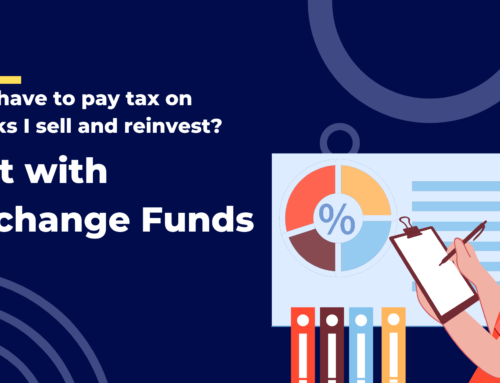Value investing, the strategy of buying stocks whose market values are low relative to their profits or book value or other accounting metrics, has a long history of success. Since 1926, the cheapest 30% of stocks as measured by the price to book ratio have outperformed the most expensive 30% of the market by 3.3% a year in the US, resulting in an order-of-magnitude difference in final wealth.
Source: Ken French’s Data Library
Looks promising, right? Why wouldn’t you want to be a value investor? Well, unfortunately it hasn’t worked for the last ten years.
Ouch. What happened?
Well, one explanation, an explanation you should always consider first in finance, is bad luck. We hope to succeed in investing by being right slightly more often than we are wrong, which inevitably means that sometimes we’ll be wrong for several years in a row. Have there been other times when value underperformed for this long? Yes. The chart below shows the 10 year annualized performance of value relative to growth. During the Great Depression and again more recently during the dot-com bubble value stocks suffered longer and deeper losing streaks than now.
So maybe it’s just a fluke. It’s hard to be satisfied with that answer though, especially when real money’s on the line. It’s hard not to wonder after something has failed for this long if it’ll ever work again. Especially considering that according to economic theory, this shouldn’t have ever worked in the first place! Value stocks generally aren’t riskier than growth stocks, so in an efficient market with rational investors value stocks shouldn’t command any special premium. It’s generally believed that value investing works because too many investors are irrational about the prospects of growth stocks.
One plausible idea is that the market is adapting. It used to be easy to outperform by picking undervalued companies, but now the idea is out there and there are too many people trying to take advantage of it. The first strong academic evidence in support of the value premium came out in the early 90s, and since then the notion of value investing has been taught to an entire generation of business school students. There are now countless mutual funds and ETFs that offer investors access to value strategies and they have collectively garnered hundreds of billions of dollars in assets. It is easier to be a value investor now than ever, and maybe that is why value investing has been so difficult lately.
Sounds reasonable, but how would we test this idea? Well, if value has underperformed as of late because too many investors are chasing value stocks, we should see this in prices. By definition, value stocks have lower prices than growth stocks, but how much lower varies over time. Time to get meta! By looking at the ratio of valuations between value and growth stocks, we can ask how cheap are cheap stocks? Cheap enough? If too many investors are chasing value strategies, than the spread should be low, on the other hand, if the spread is wide that might indicate that value stocks look especially undervalued.
Doesn’t look like value investing has caught on so much after all. In fact, though value stocks were somewhat more expensive than average in 2007 when their current period of underperformance began, they now look to be at historically cheap levels, which, based on the research, may be a harbinger for banner years to come.
But has the value spread widened for good reason? Has something in the underlying economy changed that might make value stocks worth even less than usual? Such is the argument that the latest round of information technology has fundamentally transformed our economy, and the Googles and Facebooks of the world have permanently supplanted traditional brick-and-mortar industry. As value has continued to languish, I have been hearing this argument more and more, even from more value-oriented investors like over at Morningstar.
To see if the underlying rationale behind value investing has changed, we have to first ask why value worked in the first place. There are a variety of explanations, but the most compelling one to me is representative bias: investors naively assume companies with strong recent earnings growth will continue to grow rapidly while companies with weak earnings will continue to shrink. Dechow and Sloan (1997) show that by splitting up stocks based on their prices into deciles and looking at their past 5 year earnings growth, there’s a clear monotonic trend, with value stocks having had lower and lower growth as they get cheaper, indicating that investors pay up for recent growth on the hopes that it will continue. As the chart below shows, however, this extrapolation is unfounded. If you look over the next five years, earnings across all buckets revert to the mean, with the cheapest stocks actually going on to grow their earnings faster than the so-called growth stocks. Studies show that the outperformance of value stocks over growth is concentrated around earnings announcements, as value stocks disproportionately surprise to the upside while growth stocks on average disappoint.
Dechow and Sloan use data from 1967 to 1991. Over this period of time, at least, no single group of companies consistently grew faster than average, but rather recently fast-growing companies tended to slow down, and vice versa. Has this pattern changed? Have the growth stocks of recent years continued to grow faster than other parts of the market? If so, that could spell the death of value investing, at least if we expected such a change of fortune to be permanent.
In the chart below I repeat the experiment using the latest data available, sorting the top 500 US stocks into deciles based on their five year earnings growth as of fiscal year 2009, and then plotting their growth over the last five years.
If anything, it looks like the reversals have only become even more extreme. Now, I didn’t correct for survivorship bias here by including stocks that dropped out of the top 500 during the period, so the success of the recent losers is probably overstated, but the pattern is still clear: earnings growth tends not to persist, but to reverse. The growth stocks of today’s market – the darlings of software, social media, and biotech – are trading at much higher valuations than today’s value stocks, predicated on earnings growth that probably will not come. I’m not throwing the towel in on value investing just yet.






